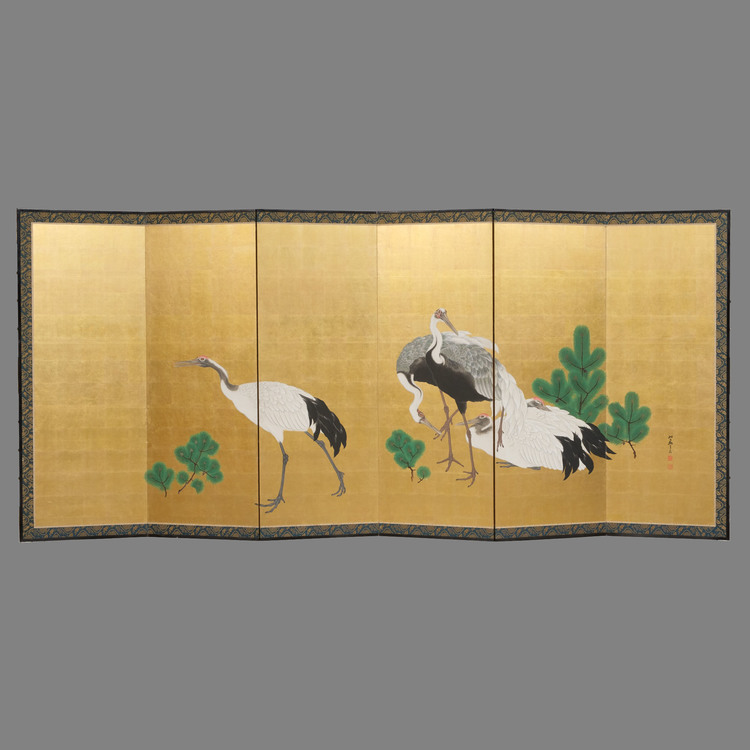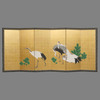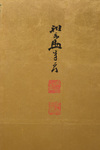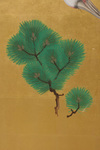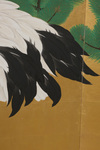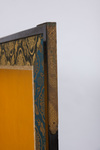A LARGE JAPANESE SIX-PANEL BYÔBU 屏風 (ROOM DIVIDER) BY GANRYÔ 岸良 (1798-1852)
An exceptional and beautiful large six-panel byôbu 屏風 (room divider) with a refined and naturalistic painting of five red-crowned cranes 丹頂鶴 (tanchô’duru) surrounded by young pine trees. This amazingly detailed multi-coloured painting is set on a vibrant gold leaf background.
It is a very tranquil scene. Two cranes are lying on the ground, resting peacefully. If you look closely one is even sleeping. Two others stand beside them, of which one is picking irregardlessly at its toes, and the other stands there very relaxed with one leg half tucked up. The last crane just got up and is walking towards something that caught its attention in the distant to the left.
From ancient times, cranes in Japan were said to live for a thousand years, serving as potent symbols of youthfulness and long life in both literature and art. Pine trees also signify longevity.
Signed and sealed twice in the lower right corner by the artist Ganryô 岸良 (1798-1852), also known as Saeki Ganryô 佐伯 岸良. The signature reads ‘Utanosuke Shiryô’ 雅楽助子良, and the seals ‘Ganryô no in’ 岸良之印 and ‘Shiryô’ 士良.
The panels are mounted with two silk borders, a thin white brocade one, and a wide moss-green brocade one. The folding screen is protected by a black lacquer wooden frame with its original hardware.
It is in a very good condition with some minor traces of age and wear. Please check the photos for a condition reference.
This room divider is very light in weight and can also be easily mounted flat on a wall and presented as one piece of art.
Total width: 372.6 cm (2 x 63.5 cm and 4 x 61.4 cm); Height: 169.9 cm.
Period: Edo Period (1600-1868)
Ganryô was born as „Hamatani Gorô Masayoshi“ (濱谷五郎昌良) in Kyôto. His nicknames were „Shirô“ (子良) and „Saeki Ganryô“ (佐伯岸良) and he also bore the pseudonyms „Ga´un“ (画雲) and „Jôkaku“ (乗鶴). He entered an apprenticeship under master Ganku (岸駒, 1756-1749), the famous founder of the Kishi school (岸) of painting, and married his eldest daughter Tei (貞). Later he worked for the Imperial Arisugawa-no-miya family (有栖川宮). Ganryô did not focus on the traditional „Kishi tiger motif“ but followed more the style of the Nanpin school (南蘋派). Thus also Ganryô´s paintings are more realistic and his strong points were depictions of figures and the so-called „bird-and-flower genre“ (kachô-ga, 花鳥画). (From Markussesko.com)
